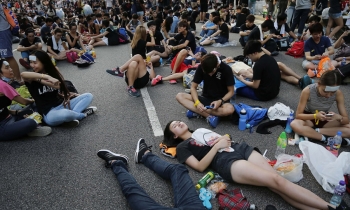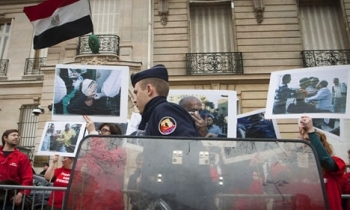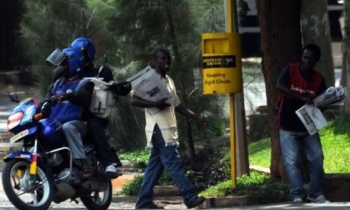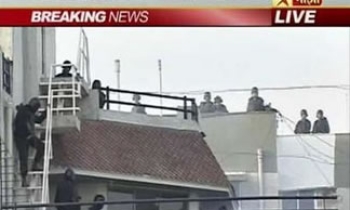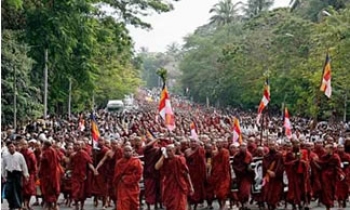HERE’S a quiz. Which UK newspaper printed a headline last week about John Prescott, the deputy prime minister, using yellow type on a lurid green background? Which newspaper asked on its front page: Is Oprah really a Zulu? And which had Catwalk Cattiness billed as its most enticing item?
Anyone nominating the Sun, the Daily Mirror, or the Daily Star should remain in class and pay attention. The correct answers are the Sunday Times, the Guardian and the Times, all representatives of the apparently "serious" press.
A revolution has taken place in the so-called quality market and not just one of size. Compact and Berliner may be buzz words for modernity, but it is the way in which news is now presented by what was formerly a broadsheet club that marks the most radical change.
Take the Times. Its decision to downsize means its front page usually contains one story, one picture, a column of news in brief and a swathe of promotional material. What may be perceived as the "important" news of the day is sometimes demoted to page two in favour of leading the paper on a more "popular" item, often about health. (In one recent week, three out of the paper’s six splash stories fell into this category). Space constraints mean that the average length of main news stories is about a dozen paragraphs. Thus is the paper of record transformed into a paper of memos.
The Guardian claimed last week that it is the world’s best designed newspaper on the authority of a New York-based panel of judges. This may tell us more about the standard of newspaper design in the US than it does about the merits of the new-look Guardian. Since when was the "world’s best designed newspaper" one so obviously struggling to make sense of its front page? The sheer weight of its promotional material and its title piece combine to drive the news further down the page.
The result? Headlines on lead stories are sometimes "invisible", appearing below the fold (the lower half of larger format newspapers hidden on news stands), and Rolf Harris-style pictures ("can you guess what it is yet?") which are unintelligible until the paper is opened out. One attempt to solve the problem displayed a picture across the width of the page. The news stories were relegated to the bottom half. The picture? A guardsman in a sentry box at Buckingham Palace and in the other sentry box someone dressed as Noddy. And this is a serious newspaper?
The Daily Telegraph has published pictures so large that not a line of any news story has appeared in the top half of its front page. The Independent, meanwhile, clings to its "shock" issue formula which, used six days a week, devalues its impact, suggesting that the real shock issue will be the day it doesn’t do one.
What this demonstrates is that you don’t have to be a tabloid newspaper to behave like one. What many of these "high-minded" publications and the red tops now have in common is the belief that a news agenda, as far as front pages are concerned, is something to look at rather than read. A loss of confidence in the basic commodity of news has ushered in an era of marketing ? and design-led ? newspapers forgetting that the purpose of newspaper design is to display material to its best advantage, not force it into a straitjacket of pre-determined shapes.
I was reminded of this last week when judging took place for the British Press Awards. I had a say in choosing the Foreign Reporter of the Year. The standard of entries was exceptional and many reports were long, requiring commitment from editors to give them space. With the changes taking place in our newspapers, with size getting smaller and typographical and picture display becoming proportionally larger, how confident can we be that, say 10 years from now, extended coverage of important global issues will find a home in our public prints?
Dramatic foreign news will always make headlines, but facts as they first appear are only instant information. It is the longer, considered articles, often written with the distance of time, that put those facts into perspective and contribute to our understanding of events.
Technology and transport have shrunk the world; the irony is that our knowledge of it hasn’t always kept pace. When many Americans were gung-ho in their support for the invasion of Iraq, a survey revealed an appalling number of them could not locate that country on a map. Do we want future generations to be that insular and ignorant?
The news pages of the Times already struggle to accommodate extended reads and its T2 supplement is a curious mix of fashion, lifestyle and emotional intelligence bolted on to arts coverage. Not much room there for serious thought. The Guardian’s G2 section, where many a laudable foreign feature has appeared, is reduced to little more than A4 size. What next for the chop?
Read all about it? Well, some of it perhaps. All the news that’s fit to print? Make that printed, all the news that fits.
Phil Swift is a former deputy editor of the Daily Mirror

